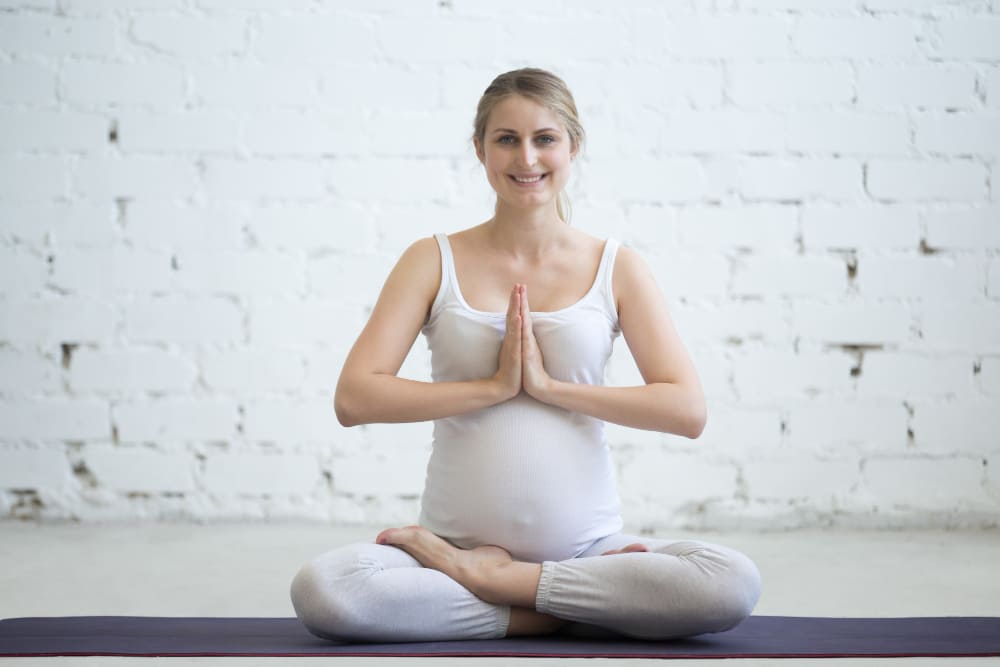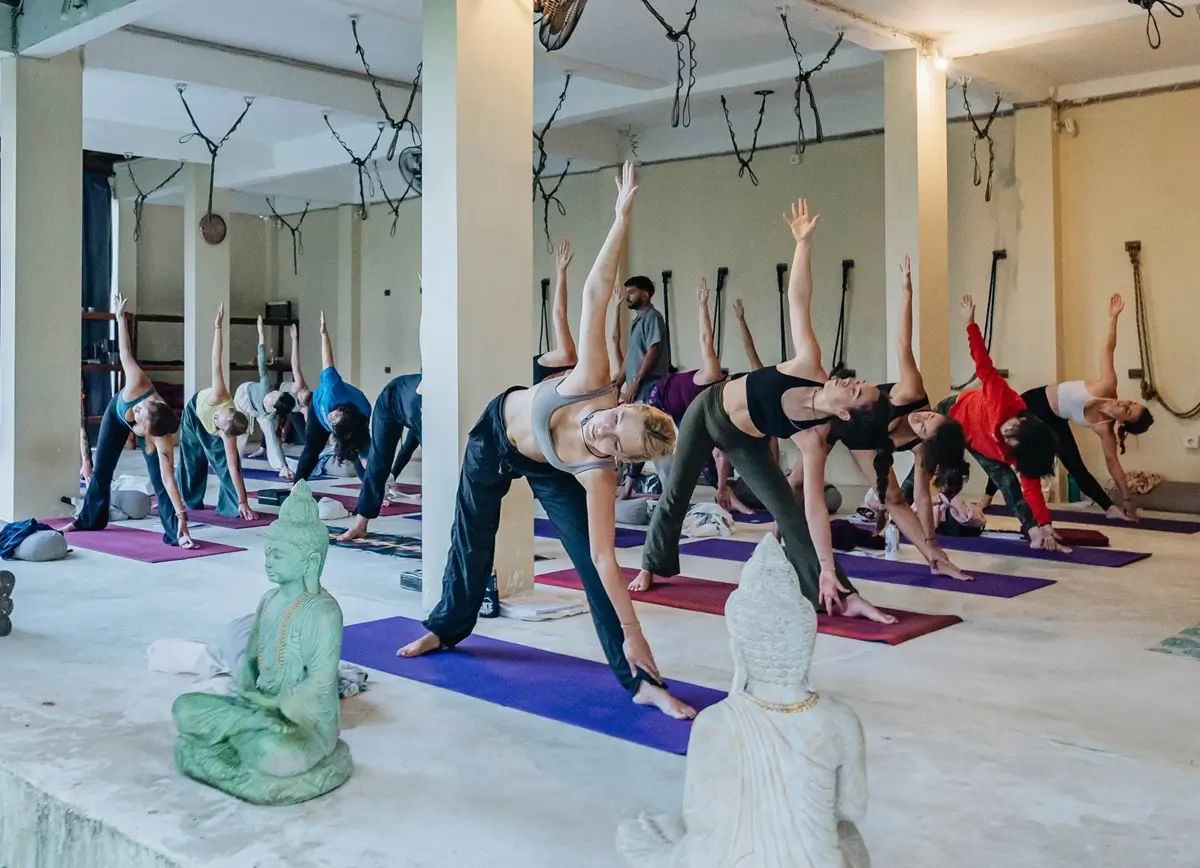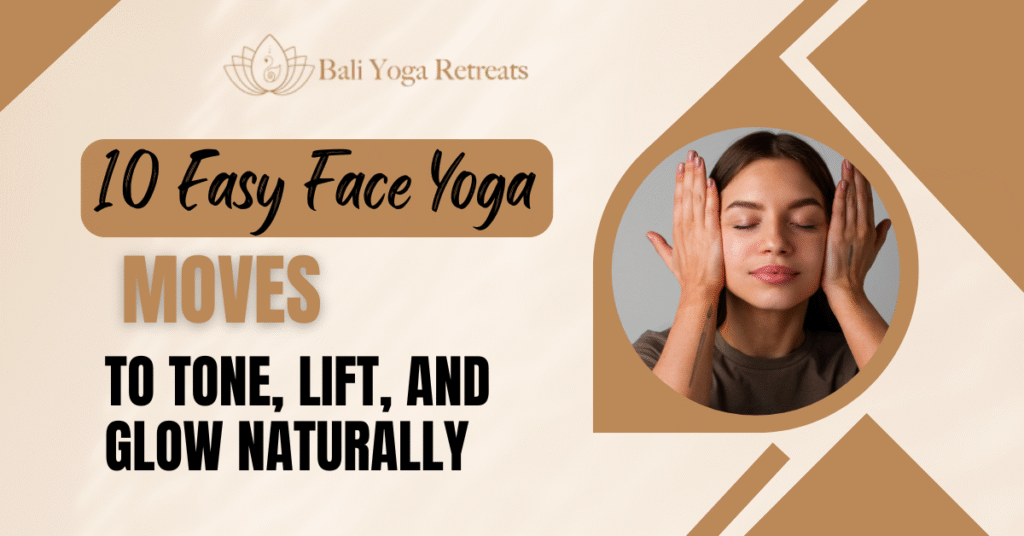You’re 28 weeks pregnant, your back is killing you, and someone just suggested prenatal yoga. You can’t help but think, I will be lucky if I can even tie my shoes right now. But what if I told you that 85% of pregnant women who participate in prenatal yoga report significantly less back pain in just two weeks?
Prenatal yoga is not just about trying to do crazy postures with your belly. Prenatal yoga is science-based approach to managing discomforts of all stages of pregnancy, preparing your body for labor, and connecting with your baby that strengthens the entire pregnancy experience.
I have seen hundreds of expecting moms experience the wonderful benefits of prenatal yoga and the practices that changed their pregnancy from 9 months of complaints to an empowered, joyful experience.
But here is what most teachers won’t tell you about getting started.
Prenatal Yoga: A Safe Way to Stay Healthy During Pregnancy
How Prenatal Yoga Differs From Regular Yoga

Prenatal yoga is not just regular yoga with a baby bump. The differences go way deeper! Traditional yoga contains a lot of strength-building poses that often challenges your body and mind, and sometimes you want to go further than you should. Prenatal yoga includes gentle movements that allow you to find your own levels of comfort in a way that is supportive of your changing body.
For example, in a regular yoga class, you would be doing deep twists, full backbends or lying flat on your stomach. This is not safe for you or for your baby! Prenatal yoga helps you modify these types of poses to be mindful of the changes happening in your body.
And don’t even get me started on the breathing! Ujjayi breath is fantastic! But if your regular yoga class is full of vinyasa flow, then you are not just breathing in a calming way, you are breathing in a way that is creating stress and not relaxing. Deep, slow breaths to help you find space for your growing baby while relieving stress, is what we are after!
Another big advantage of joining prenatal yoga classes is finding a similar community! In a prenatal yoga class, you are with other moms-to-be, who knows what swollen ankles feel like, or how it feels in the middle of the night with back pain, or that weird pregnancy cravings. No other yoga community is like that. You share your “ah-ha” moments with other pregnant moms who can relate to you on a different level than someone in a traditional yoga class.
Essential Equipment and Preparation
The beauty of prenatal yoga is you don’t need much to get started. Here’s your basic toolkit:
- A non-slip yoga mat (slightly thicker for extra cushioning)
- 2 firm yoga blocks for support when your belly gets in the way
- A yoga bolster or firm pillow for seated poses
- A lightweight blanket for relaxation
Wear comfortable, breathable clothes that stretch with you. Layering works great since pregnancy can send your body temperature on a roller coaster ride.
Before class, empty your bladder (I know, for the fifth time today), and bring water to stay hydrated. Eat a light snack about 30 minutes before practice – nothing too heavy or you’ll feel uncomfortable during forward bends.
Most importantly, prepare mentally. Prenatal yoga isn’t about “getting a workout” – it’s about connecting with your baby and preparing your body for the incredible journey ahead.
Physical Benefits of Prenatal Yoga During Pregnancy

A. Strengthening Core Muscles for Labour Preparation
Pregnancy puts your body through the ultimate marathon, and your core muscles are the MVPs during labor. Prenatal yoga targets those deep abdominal muscles, pelvic floor, and lower back in ways that regular workouts just can’t match.
When you practice poses like modified plank and cat-cow regularly, you’re essentially training for the big day. These exercises build the stamina you’ll need during those long hours of labor. Plus, a stronger core helps maintain proper posture as your baby bump grows, preventing that nagging lower back pain that so many pregnant women struggle with.
Many moms tell me they felt noticeably more confident during delivery after doing prenatal yoga throughout their pregnancy. Your body knows what to do naturally, but giving those muscles some extra practice definitely helps!
B. Relieving Common Pregnancy Discomforts
Pregnancy brings joy—and a whole lot of physical discomfort. The good news? Prenatal yoga is basically a toolkit for tackling those annoying symptoms.
Morning sickness got you down? Certain gentle twists and breathing techniques can settle your stomach when nothing else seems to work. Those swollen ankles driving you crazy? Try elevated leg poses to improve circulation and reduce fluid retention.
Here’s what prenatal yoga can help with:
I’ve seen women walk into class barely able to move from hip pain and leave feeling like they could dance. That’s not an exaggeration—the relief can be that dramatic.
I’ve seen women walk into class barely able to move from hip pain and leave feeling like they could dance. That’s not an exaggeration—the relief can be that dramatic. Let’s understand some pregnancy discomfort and its yoga solutions.
| Pregnancy Discomfort | Yoga Solution |
| Back pain | Cat-cow pose, gentle backbends |
| Sciatica | Pigeon pose modifications |
| Insomnia | InsomniaRestorative poses, yogic breathing |
| Heartburn | Supported upright poses |
| Round ligament pain | Hip openers, gentle stretches |
C. Sleeping on your side will help with balance and stabilization of your body.
Your center of balance changes drastically during pregnancy — well, it can certainly feel that way, almost overnight! All of a sudden, you’re bumping into furniture and getting weak kneed on the stairs.
Prenatal yoga also includes some standing poses that are designed to help your body adjust as your baby grows by time. Tree pose and warrior poses train your body to find equilibrium despite the fact that your shape is evolving week to week.
They strengthen the smaller, stabilizing muscles in your legs and core that don’t get a lot of attention in everyday life.
D. Enhancing Flexibility and Circulation

Having a baby in your belly restricts your movement in ways you never imagined. Prenatal yoga really helps in this by gentle stretches that maintain flexibility in your body without overextending your already-loosened joints.
During pregnancy, your body releases hormones which are called relaxin and progesterone. These hormones help loosen your ligaments (the tissues that connect your bones) to prepare for childbirth. But this also means your joints may be less stable, making you more likely to get hurt if you stretch or move the wrong way.
Prenatal yoga can help! It teaches you how to stretch safely while respecting your body’s new limits. This way, you stay flexible and strong, without risking injury
It also helps in improving blood circulation, which is another big benefit for you and your baby’s health. The gentle movements and deep breathing increase blood flow throughout your body, delivering more oxygen and nutrients to both you and your baby. This helps reduce swelling, prevent varicose veins, and may even improve sleep quality.
Many pregnant women report feeling less “heavy” and more energetic after regular yoga practice, simply because their circulation improves so dramatically.
E. Supporting Healthy Weight Management
Pregnancy weight management is not a matter of staying slim—it is a matter of gaining appropriately for your health and that of your baby, and staying strong and fit.
Prenatal yoga is gentle enough for all three trimesters, but still burns good moderate calories (approximately 150–300 per hour). While high-impact exercises like running may feel less and less comfortable throughout pregnancy (and eventually unsafe), the same isn’t true of yoga if you modify as needed.
The mindfulness of yoga has also enabled many women to have a healthier relationship with their bodies as they change. Instead of stressing about how you look, yoga helps you focus on all the incredible things your body can do — and how it’s creating new life.
With more energy, many women who participate in prenatal yoga find they can stay active in other ways so they can more easily experience appropriate weight gain and recover faster after giving birth.
Apart from physical strength and flexibility, prenatal yoga also nurtures emotional balance and gives mental clarity, both are really crucial factors during pregnancy. One of the most powerful things one can do during pregnancy is to focus on mindful breathing. Through proper guidance of breathing techniques for pregnancy, women learns how to manage stress, reduce anxiety, and prepare for labour.
These Techniques are often taught in the early stage of your prenatal yoga classes to increase the oxygen flow and help mother and baby to stay calm and relaxed. Joining pregnancy yoga classes is more than just an exercise—it creates a support system. Being in a place with others who understand your journey can boost your confidence. With a skilled and certified prenatal yoga instructor, instructor can guide you safely through all the poses, and ensure that each of your movements supports your changing body. Safe yoga for pregnant women is not about pushing limits—it’s about honouring your body’s needs with care.
Gentle Poses and Stretching for Comfort and Strength

Not all forms of movement are safe during pregnancy, but gentle yoga that is specially designed for pregnancy ensures your baby and your safety . No matter if you are dealing with back pain, fatigue, or swelling, consistent practice of prenatal yoga exercises can help restore balance. You can try the poses like supported cat-cow, child’s pose, and butterfly stretch that helps in effective lower back pain relief during pregnancy and enhance flexibility.
Intentional stretching during pregnancy supports posture, reduces stiffness, and increases circulation. There are some common yoga poses for pregnant women, such as side-lying savasana or modified warrior II improve joint mobility while keeping your baby safe. Make sure to perform yoga only under the guidance of a certified instructor, and always follow essential prenatal yoga safety tips.
Avoid deep twists, backbends, or lying flat on your back after the first trimester. Use props to support your belly and hips, and never hesitate to rest when needed.
Preparing for Labour and Choosing the Right Yoga Style
One of the most important roles of prenatal yoga is to prepare you for childbirth. Do yoga that focuses on poses that strengthen your pelvic floor, open the hips, and train the body to respond calmly under stress. When combined it with the proper breathing techniques in prenatal yoga, these practices help manage labor pain and facilitate a smoother delivery.
If you are new to yoga or returning after a break, please consider pregnancy hatha yoga or restorative yoga for pregnant women. Hatha generally deals with alignment and gentle strength, but is always accessible. Restorative is primarily about deep rest and recovery; both forms of yoga will help you be active in your pregnancy.
Choosing an appropriate class with a good instructor makes sure that you are nurtured and guided through appreciation, wisdom, knowledge, and compassion. Prenatal yoga aids in building a healthy pregnancy in whichever way you prefer to empower yourself emotionally, physically, or spiritually.
Frequently Asked Questions
1. Can you do prenatal yoga in all three trimesters?
Yes! Prenatal yoga is intended to be both safe and beneficial during all three trimesters. But poses are tweaked as your body changes, particularly in the first trimester, after which deep twists or lying flat on your back can be problematic. As always, discuss with your doctor and consult with a certified prenatal yoga instructor.
2. Does prenatal yoga actually ease back pain and swelling?
Absolutely. Prenatal yoga provides gentle stretches (such as cat-cow and supported child’s pose) to help ease back tension as well as poses to boost circulation (think: legs-up) and reduce swelling. Many women say they notice a major improvement after just several sessions.
3. What makes you different from a regular yoga class?
Avoid deep twists or intense backbends, or poses that press into your belly. Instead, it plays up gentle movements, pelvic floor strengthening and breathwork safe for pregnancy. It also focuses on safety, community and on getting your body ready to go to labor, as opposed to the more typical yoga class.
4. Do I need to have taken yoga before to join prenatal yoga?
Not at all! This is a great class for beginners and experienced yogis. Classes are tailored to be pregnancy friendly, with modifications for all skill levels. The emphasis is on connection, comfort and preparation, not fancy poses.
















